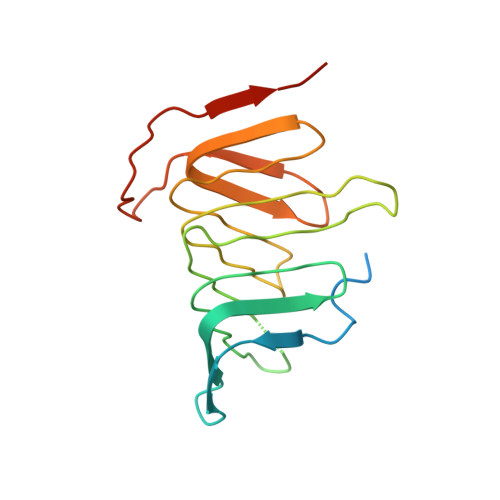Crystal Structure of Lpth, the Periplasmic Component of the Lipopolysaccharide Transport Machinery from Pseudomonas Aeruginosa.
Bollati, M., Villa, R., Gourlay, L.J., Benedet, M., Deho, G., Polissi, A., Barbiroli, A., Martorana, A.M., Sperandeo, P., Bolognesi, M., Marco, N.(2015) FEBS J 282: 1980
- PubMed: 25735820
- DOI: https://doi.org/10.1111/febs.13254
- Primary Citation of Related Structures:
4UU4 - PubMed Abstract:
Lipopolysaccharide (LPS) is the main glycolipid present in the outer leaflet of the outer membrane (OM) of Gram-negative bacteria, where it modulates OM permeability, therefore preventing many toxic compounds from entering the cell. LPS biogenesis is an essential process in Gram-negative bacteria and thus is an ideal target pathway for the development of novel specific antimicrobials. The lipopolysaccharide transport (Lpt) system is responsible for transporting LPS from the periplasmic surface of the inner membrane, where it is assembled, to the cell surface where it is then inserted in the OM. The Lpt system has been widely studied in Escherichia coli, where it consists of seven essential proteins located in the inner membrane (LptBCFG), in the periplasm (LptA) and in the OM (LptDE). In the present study, we focus our attention on the Pseudomonas aeruginosa PAO1 Lpt system. We identified an LptA orthologue, named LptH, and solved its crystal structure at a resolution of 2.75 Å. Using interspecies complementation and site-directed mutagenesis of a conserved glycine residue, we demonstrate that P. aeruginosa LptH is the genetic and functional homologue of E. coli LptA, with whom it shares the β-jellyroll fold identified also in other members of the canonical E. coli Lpt model system. Furthermore, we modeled the N-terminal β-jellyroll domain of P. aeruginosa LptD, based on the crystal structure of its homologue from Shigella flexneri, aiming to provide more general insight into the mechanism of LPS binding and transport in P. aeruginosa. Both LptH and LptD may represent new targets for the discovery of next generation antibacterial drugs, targeting specific opportunistic pathogens such as P. aeruginosa.
Organizational Affiliation:
Department of Biosciences, University of Milano, Italy.














